 |
King of Chemicals Manufacturers |
Specifications, Properties, Uses, White Beeswax BP Ph Eur JP EP FCC Food Grade Manufacturer Supplier Exporter Wholesale & Small Packs, CAS Number 8012-89-3. |
|
| King of Chemicals has several associated companies having accreditations like cGMP, GLP - FDA Approved Good Manufacturing Practice and Good Laboratory Practice of WHO standard, ISO-9001, ISO-14001, ISO/IEC 17025, ISO ISO-45000, HACCP, FSSC 220000, FSSAI, "REACH" Registered, Kosher & Halal Certified. e-CTD and DMF support can be made available if needed. We offer USP NF BP Ph Eur EP IP JP Analytical Reagent FCC Food Grade Chemicals & Nutraceuticals. | |
        |
|
Muby Chem Pvt. Ltd. is a several decades old group of companies, engaged in manufacturing, supplying, distributing, wholesale supplies of White Beeswax for actual users, including retail or small pack supplies for research and development work.
We supply fine and speciality chemicals, pharmaceutical excipients, mineral fortifiers in chemically pure, analytical reagent grade, IP BP USP Ph Eur EP JP and other pharmaceutical grade monograph including FCC Food grade chemicals and Nutraceuticals at best prices. We and/or our associated units have all the facilities to supply as per cGMP standard observing good manufacturing practice and good laboratory practice. We can assure low microbial count and also offer a test certificate for the same. We maintain warehouses across USA, India, and UAE. Our group exports to USA, Canada, Mexico, Argentina, Brazil, Chile, Korea, Malaysia, Thailand, Indonesia, Europe, and several other parts of the world. We supply in wholesale container loads to small pack of few grams. Solid products may be specified for it size and shape as desired by the buyer.


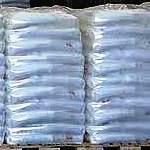
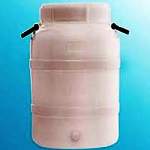
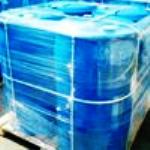
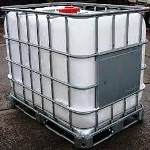
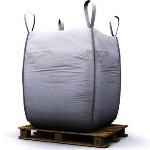
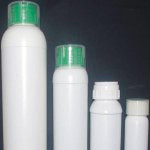
White Beeswax CAS Number 8012-89-3
For Properties Specifications Uses of White Beeswax Click Properties, Specifications, Uses, Price, Process of White Beeswax Manufacturer.
For For SDS MSDS Sheet of White Beeswax Click SDS Safety Data Sheet MSDS Sheet of White Beeswax Manufacturer.
The Properties, Specifications, Monograph and Uses of White Beeswax:
Beeswax has applications in human food and flavoring, for example as a glazing agent. It is edible, in the sense of having similar negligible toxicity to plant waxes, and is approved for food use in the European Union under the E number E901.
White Beeswax BP Ph Eur Grade Specifications
Ph Eur
Action and use: Excipient.
DEFINITION
Wax obtained by bleaching yellow beeswax.
CHARACTERS
Appearance: White or yellowish-white pieces or plates, translucent when thin, with a fine-grained, matt and non-crystalline fracture; when warmed in the hand they become soft and malleable. It has an odour similar to that of yellow beeswax, though fainter and never rancid. It is tasteless and does not stick to the teeth.
Solubility: Practically insoluble in water, partially soluble in hot ethanol (90 per cent V/V) and completely soluble in fatty and essential oils.
Relative density: About 0.960.
TESTS
Drop point: 61C to 66C.
Melt the beeswax by heating on a water-bath, pour onto a glass plate and allow to cool to a semi-solid mass. Fill the metal cup by inserting the wider end into the beeswax and repeating the procedure until beeswax extrudes from the narrow opening. Remove the excess with a spatula and insert the thermometer immediately. Remove the beeswax displaced. Allow to stand at room temperature for at least 12 h before determining the drop point.
Acid value: 17.0 to 24.0.
To 2.00 g (m g), in a 250 ml conical flask fitted with a reflux condenser, add 40 ml of xylene and a few glass beads. Heat until the substance is dissolved. Add 20 ml of ethanol (96 percent) and 0.5 ml of phenolphthalein solution and titrate the hot solution with 0.5 M alcoholic potassium hydroxide until a red colour persists for at least 10 s (n1 ml). Carry out a blank test (n2 ml).
Ester value: 70 to 80.
Saponification value: 87 to 104.
To 2.00 g (m g), in a 250 ml conical flask fitted with a reflux condenser, add 30 ml of a mixture of equal volumes of ethanol (96 per cent) and xylene and a few glass beads. Heat until the substance is dissolved. Add 25.0 ml of 0.5 M alcoholic potassium hydroxide and heat under a reflux condenser for 3 h. Titrate the hot solution immediately with 0.5 M hydrochloric acid, using 1 ml of phenolphthalein solution as indicator (n1 ml). Reheat the solution to boiling several times during the course of the titration. Carry out a blank test (n2 ml).
Ceresin, paraffins and certain other waxes: To 3.0 g, in a 100 ml round-bottomed flask, add 30 ml of a 40 g/l solution of potassium hydroxide in aldehyde-free alcohol and boil gently under a reflux condenser for 2 h. Remove the condenser and immediately insert a thermometer. Place the flask in a water-bath at 80C and allow to cool, swirling the solution continuously. No precipitate is formed until 65C, although the solution may be slightly opalescent. Beginning at 65C, the solution may become cloudy and precipitates may be formed. At 59C, the solution is cloudy.
Glycerol and other polyols: Maximum 0.5 per cent m/m, calculated as glycerol.
To 0.20 g add 10 ml of alcoholic potassium hydroxide solution and heat on a water-bath under a reflux condenser for 30 min. Add 50 ml of dilute sulphuric acid, cool and filter. Rinse the flask and the filter with dilute sulphuric acid. Combine the filtrate and washings and dilute to 100.0 ml with dilute sulphuric acid. Place 1.0 ml of the solution in a test-tube, add 0.5 ml of a 10.7 g/l solution of sodium periodate, mix and allow to stand for 5 min. Add 1.0 ml of decolorised fuchsin solution and mix. Any precipitate disappears. Place the tube in a beaker containing water at 40C. During cooling observe for 10-15 min. Any violet-blue colour in the solution is not more intense than that in a standard prepared at the same time and in the same manner using 1.0 ml of a 10 mg/l solution of glycerol R in dilute sulphuric acid.
Beeswax, White FCC Food Grade Specifications
White Wax
INS: 901
DESCRIPTION
Beeswax, White, occurs as a yellow-white solid, somewhat translucent in thin layers, with a faint, characteristic odor, free from rancidity. It is the bleached, purified wax from the honeycomb of the bee Apis mellifera L. (Fam. Apidae), and it consists primarily of myricyl palmitate (myricin), cerotic acid and ester, and some high-carbon paraffins. Its specific gravity is about 0.95. Beeswax, White, is insoluble in water and sparingly soluble in cold alcohol. Boiling alcohol dissolves cerotic acid and part of the myricin. It is completely soluble in chloroform, in ether, and in fixed and volatile oils. It is partly soluble in cold carbon disulfide and is completely soluble in it at temperatures of 30C or above.
Function: Surface-finishing (glazing) agent; release agent; raw material for flavoring agent.
REQUIREMENTS
Acid Value: Between 17 and 24.
Carnauba Wax: Passes test.
Ester Value: Between 72 and 79.
Fats, Japan Wax, Rosin, and Soap: Passes test.
Lead: Not more than 5 mg/kg.
Melting Range: Between 62C and 65C.
Saponification Cloud Test: Passes test.
We also manufacture White Beeswax JP EP Grade.
The MSDS-SDS Hazard Statement of White Beeswax:
White Beeswax SDS, Safety Data Sheet
MSDS Sheet, Material Safety Data Sheet 12-Feb-25
1. Product Identification
Product Name & Other Names: White Beeswax
CAS No.: 8012-89-3
EINECS EC Number: 232-383-7
Relevant uses and uses advised against (if any): Industrial use only.
Suppliers: As per letterhead.
2. Hazards Identification
GHS, Globally Harmonized System Classification in accordance with 29 CFR 1910
Classification according to Regulation (EC) No 1272/2008
Not a hazardous substance or mixture according to Regulation (EC) No. 1272/2008.
This substance is not classified as dangerous according to Directive 67/548/EEC.
Labeling according to GHS & Regulation (EC) No 1272/2008
GHS Label Elements NONE |
Signal Word: None
Precautionary statements:
P261: Avoid breathing dust/fume/gas/mist/vapors/spray.
P262: Do not get in eyes, on skin, or on clothing.
P281: Use personal protective equipment as required.
P302+P352 - IF ON SKIN: Wash with plenty of soap and water.
P304 + P340 - IF INHALED: Remove victim to fresh air and keep at rest in a position comfortable for breathing.
P305 + P351 + P338 - IF IN EYES: Rinse cautiously with water for several minutes. Remove contact lenses, if present and easy to do. Continue rinsing.
P337+313: If eye irritation persists get medical advice/attention.
3. Composition/Information on Ingredients
Product Name & Other Names: White Beeswax
CAS No.: 8012-89-3
EINECS EC Number: 232-383-7
4. First Aid Measures
Always get medical attention after the first aid is over.
Inhalation: Remove to fresh air. If not breathing, give artificial respiration. If breathing is difficult, give oxygen. Get medical attention.
Ingestion: Induce vomiting immediately as directed by medical personnel. Never give anything by mouth to an unconscious person. Get medical attention.
Skin Contact: Wash affected areas with soap and water for at least 15 minutes while removing contaminated clothing and shoes. Get medical attention if symptoms occur.
Eye Contact: Immediately flush eyes with plenty of water for at least 15 minutes, lifting lower and upper eyelids occasionally. Get medical attention immediately.
5. Fire Fighting Measures
Fire: It is not considered to be a fire hazard. It is flammable at higher temperatures. This material may burn but will not ignite readily.
Explosion: Reactions with incompatibles may pose an explosion hazard.
Fire Extinguishing Media: Use water spray, alcohol-resistant foam, dry chemical, or carbon dioxide. Use means suitable for extinguishing surrounding fire.
Special Information In the event of a fire, wear full protective clothing and NIOSH-approved self-contained breathing apparatus with full face piece operated in the pressure demand or other positive pressure mode.
6. Accidental Release Measures
Personal precautions, protective equipment, and emergency procedures: Avoid breathing dust/fumes/gas/mist/vapors/spray. Ensure adequate ventilation. Use individual protective equipment (waterproof boots, suitable protective clothing, safety glasses, etc.).
Environmental precautions: Do not let the product enter drains, soil, or water sources.
Methods and materials used for containment Cleanup procedures and Storage: Contain spilled material. Cover with an inert, non-combustible absorbent material, (e.g. sand, earth, diatomaceous earth, vermiculite). Vacuum or sweep-up and remove to an approved disposal container.
7. Handling and Storage
Precautions for safe handling: Apply according to good manufacturing and industrial hygiene practices. Ensure proper ventilation. Wash thoroughly after handling. Do not drink, eat, or smoke while handling. Avoid contact with skin, eyes, and clothing. Minimize dust generation. Avoid breathing dust/fumes/gas/mist/vapors/spray. Keep container tightly closed. Avoid ingestion and inhalation. Use individual protective equipment (waterproof boots, suitable protective clothing, safety glasses, etc.).
Conditions for safe storage, including any incompatibilities: Store in cool, dry, and ventilated area away from heat sources and protected from sunlight in tightly closed original container. Keep air contact to a minimum. Do not leave the material container open. Store protected from heat, sparks and ignition sources and incompatible materials. Avoid contact with skin and eyes. Avoid inhalation of dust/mist/vapor. Do not store with incompatible materials like oxidizing materials.
8. Exposure Controls/Personal Protection
Airborne Exposure Limits: None established
Ventilation System:
A system of local and/or general exhaust is recommended to keep employee exposures low.
Personal Respirators (NIOSH Approved):
If the exposure limit is exceeded and engineering controls are not feasible, a half face piece particulate respirator (NIOSH type N95 or better filters) may be worn for up to ten times the exposure limit or the maximum use concentration specified by the appropriate regulatory agency or respirator supplier, whichever is lowest. A full-face piece particulate respirator (NIOSH type N100 filters) may be worn up to 50 times the exposure limit, or the maximum use concentration specified by the appropriate regulatory agency, or respirator supplier, whichever is lowest.
Skin Protection: Wear protective gloves and clean body-covering clothing.
Eye Protection:: Use chemical safety goggles and/or full face shield where dusting or splashing of solutions is possible. Maintain eye wash fountain and quick-drench facilities in work area.
Other Control Measures: Maintain good housekeeping in work area. Handle in accordance with good industrial hygiene and safety practice.
9. Physical and Chemical Properties
Appearance: It is white to slight yellow waxy material.
Odor: Odorless to slight honey-like.
Odor threshold: No information found.
pH: 7 to 8.
Relative density: 0.96 to 0.97
Boiling Point: >260C.
Melting Point: 63C approximate
Flash point: No information found.
Auto-ignition temperature: No information found.
Decomposition temperature: No information found.
Upper/lower flammability or explosive limits: No information found.
Vapor pressure: No information found.
Vapor density: No information found.
Evaporation rate: No information found.
Flammability (solid, gas): No information found.
Partition coefficient: n-octanol/water: No information found.
Solubility: Insoluble in water. Soluble in organic solvents when warmed.
Viscosity: No information found.
10. Stability and Reactivity
Stability: It is stable under ordinary conditions of use and storage.
Hazardous Decomposition Products: It decomposes upon heating and forms nitrogen and carbon oxides along with fumes.
Hazardous Polymerization: Will not occur.
Incompatibilities: Oxidizing agents and acids.
11. Toxicological Information
Oral rat LD50: No information found.
Carcinogenicity: No component of this product present at levels greater than or equal to 0.1% is identified as possible or confirmed human carcinogen by IARC, ACGIH, OSHA and NTP.
Mutagenic Effects: No information found.
Developmental Toxicity: No information found.
Reproductive Effects: No information found.
12. Ecological Information
Toxicity to fish: NA.
Persistence and Degradability: Expected to degrade.
Mobility: No information found.
Bioaccumulation/ Accumulation: This product is readily biodegradable.
Results of PBT and vPvB assessment: No information found for assessment.
13. Disposal Considerations
Follow standard disposal procedures. Dispose of container of and unused contents in accordance with legal requirements.
14. Transport Information
DOT (USA): Not regulated.
IMDG: Not regulated.
IATA: Not regulated.
ADT/RID: Not regulated.
15. Regulatory Information
USA Regulations:
California Proposition 65: Not listed.
DISCLAIMER: The information and recommendations set forth herein are presented in good faith and believed correct as of the date hereof. It is compiled from various sources and it is not necessarily all inclusive nor fully adequate in every circumstance. In addition, these suggestions should not be confused with nor followed in violation of applicable laws, regulations, rules or insurance requirements applicable. This MSDS sheet is intended only as a guide to the appropriate precautionary handling of the material by a properly trained person using this product. Individuals receiving the information must exercise their independent judgment in determining its appropriateness for a particular purpose.

White Beeswax Manufacturers, Suppliers, Exporters, Wholesalers:
King of Chemicals manufacturers

Plot No. 2900/46&47 + 2900/163to167, GIDC, Ankleshwar, Dist. Bharuch, India
India, USA, UAE
TEL: (Office) 91-22-23774610, 91-22-23723564
e-mail: info@kingofchemicals.com
Copyright and Usual Disclaimer is Applicable --- February 12, 2025
If I give you “My Word” Nobody can undo it.
If I sign an “Agreement” my Lawyer will undo it
Our products are for industrial and laboratory use only. The user must test the material before use. We are not dispensing chemists or druggist and do not offer over the counter type (OTC) products for medical use by individuals.
We and our associates manufacture pure chemicals surpassing Monograph Specifications of Analytical Reagent Standards, British & European Pharmacopoeia BP Ph Eur EP Standard, US Pharmacopoeia USP NF Standard, Indian Pharmacopoeia IP Standard, Japan Pharmacopoeia JP Standard, FCC Food Grade Standard. |
|